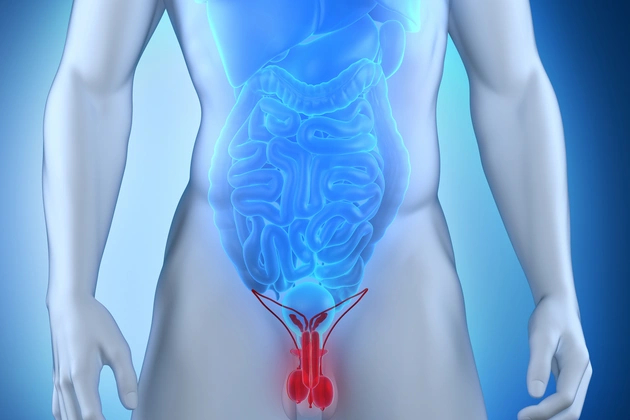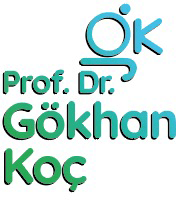
Testicular Cancer Treatment
Testicular Cancer Treatment: A Healthy Future with Early Diagnosis and Advanced Therapeutic Methods
Testicular cancer is a type of cancer commonly seen among young men. It develops due to the abnormal proliferation of cells in the testes and can grow rapidly. When diagnosed early, testicular cancer treatment can be carried out with a high success rate. However, the timing of treatment initiation and choice of therapy depend on the stage, type of cancer, and the patient’s overall health condition. This article will comprehensively discuss the most effective treatment methods, steps during the treatment process, and the post-treatment recovery phase for testicular cancer.
What is Testicular Cancer?
Testicular cancer is a malignancy occurring in the testes, the male reproductive organs responsible for producing sperm and the male hormone testosterone. It most commonly affects men aged between 15 and 35, though it can occur at any age. Although the exact causes are not fully understood, certain genetic factors, developmental abnormalities of the testes, and environmental influences may increase the risk.
Symptoms of Testicular Cancer:
The most notable symptoms of testicular cancer include swelling or hardness in the testes. Some patients may notice this swelling is painless. Other symptoms can include lower abdominal pain, swelling or discomfort in the groin, breast tenderness, and hormonal changes. Testicular cancer usually does not cause pain in its early stages; therefore, early consultation with a specialist upon noticing any symptoms is critical.
Diagnosis of Testicular Cancer:
Diagnosis involves a series of tests and imaging techniques. The first step is taking the patient’s medical history and performing a physical examination to check for any swelling or hard areas in the testes. Confirmatory tests typically include:
-
Ultrasound: Used to assess the size and structure of masses or swellings in the testes; often the initial diagnostic tool.
-
Blood Tests: Tumor markers such as alpha-fetoprotein (AFP) and human chorionic gonadotropin (HCG) can be elevated in testicular cancer, aiding in diagnosis and classification.
-
CT and MRI Scans: Advanced imaging may be employed to determine whether cancer has spread beyond the testes.
Treatment Methods for Testicular Cancer:
The stage at which testicular cancer is detected plays a crucial role in determining the treatment approach. Early diagnosis improves treatment success and accelerates recovery. Main treatment modalities include:
-
Surgical Intervention (Orchiectomy):
The primary treatment is surgical removal of the affected testis, known as orchiectomy. This procedure forms the cornerstone of testicular cancer treatment and is generally the first therapeutic step. The surgical technique may vary depending on the patient’s age and cancer stage. In some cases, only one testis is removed while preserving the other.Robotic surgery is among the most advanced techniques currently employed in testicular cancer treatment. Professor Gökhan Koç from Izmir utilizes robotic surgery to provide patients with a more precise and minimally invasive treatment. The small incisions used in robotic procedures aid in speeding up the patient’s recovery.
-
Chemotherapy:
Chemotherapy involves the use of potent drugs to destroy cancer cells and is frequently used, especially if the cancer has metastasized or spread. It is often administered after surgery to eliminate residual cancer cells and reduce the risk of recurrence. Patients may experience side effects during chemotherapy, which generally diminish after treatment completion. -
Radiotherapy:
This method uses high-energy rays to kill cancer cells. Radiotherapy is commonly applied post-surgery to eradicate any remaining cancer cells and prevent relapse. It typically targets the lymph nodes around the testes or other areas where cancer may have spread. -
Surveillance and Active Monitoring:
In certain early-stage, low-risk testicular cancer cases, treatment may be deferred initially in favor of close monitoring. Active surveillance includes regular tests and imaging to watch for any disease progression.
Robotic Surgery and Advanced Technologies in Testicular Cancer Treatment:
Recent advances such as robotic surgery have revolutionized testicular cancer treatment. Offering a less invasive alternative to traditional surgery, robotic techniques involve smaller incisions, reduced postoperative pain, and faster recovery times. Additionally, robotic systems provide surgeons with enhanced precision during operations. Professor Gökhan Koç successfully applies robotic surgery in treating testicular cancer, enabling patients to experience less pain and quicker healing.
Post-Treatment Recovery and Quality of Life:
Recovery after testicular cancer treatment varies depending on the method used. After surgery, patients typically stay in the hospital for a few days before beginning home recovery. Those undergoing robotic surgery generally enjoy a faster recovery and can return to daily activities sooner. Side effects from chemotherapy and radiotherapy may occur but can be managed effectively with regular follow-up and supportive care.
Conclusion: Early Diagnosis and Advanced Technologies Are Key to Success in Testicular Cancer Treatment
Testicular cancer treatment is highly manageable with early diagnosis and the integration of surgical intervention, chemotherapy, radiotherapy, and modern techniques such as robotic surgery. Professor Gökhan Koç in Izmir provides patients with optimal treatment options through the use of cutting-edge medical technologies. For more information or to consult a professional urology specialist, please seek medical advice. Remember, early diagnosis and appropriate treatment lead to successful outcomes and improved quality of life in testicular cancer patients.

Social Media